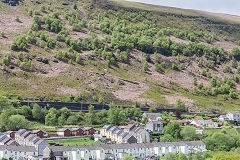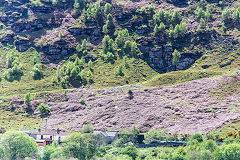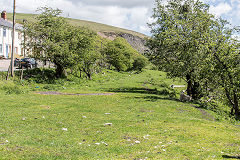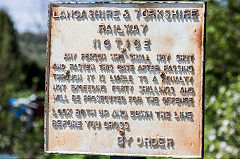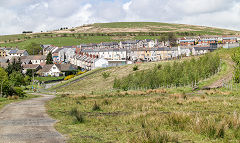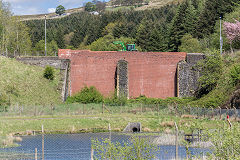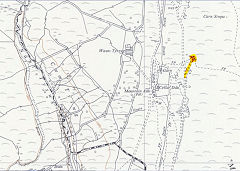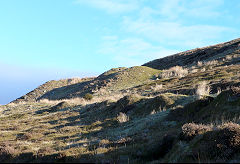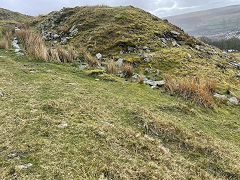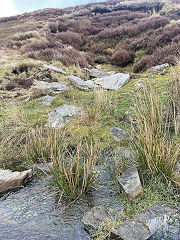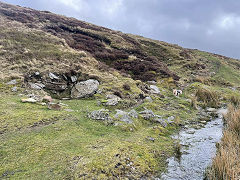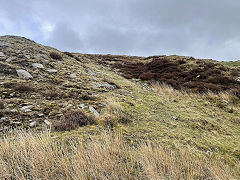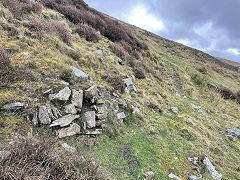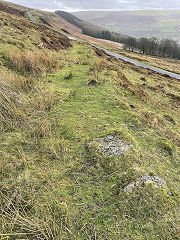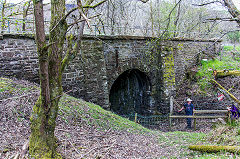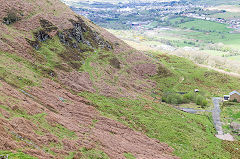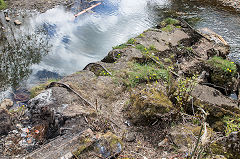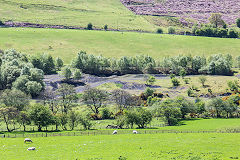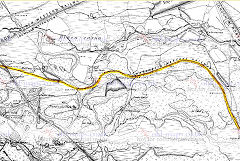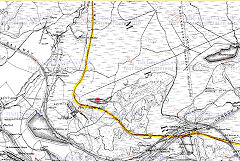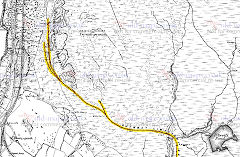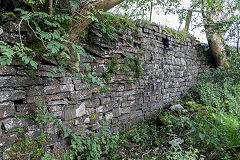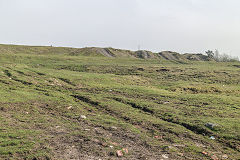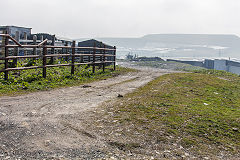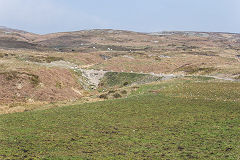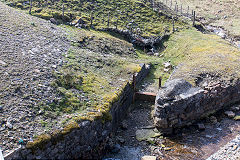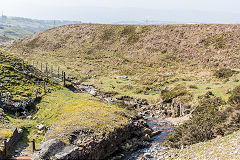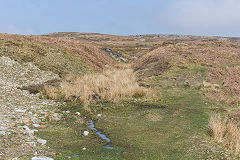The Industrial Archaeology and History of the Rhymney Valley
Or click on the button to go to :-
Click on the thumbnail to enlarge a photo or map and sometimes read more about it.
Then click 'Full Size' on the toolbar to see it in all its glory.
The Darran Valley
Bargoed to Groes-faen Colliery - SO 1346 0057
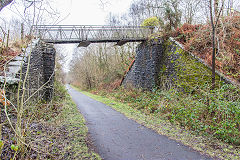
BMR Woollen Mill footbridge
|
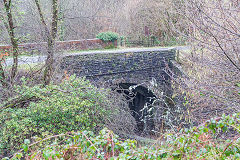
BMR Pont Caradoc
|
|
|
Wingfield Colliery sidings - SO 1345 0055
The sites of screens and sidings on the BMR opposite Groes-faen Colliery belong to South Wingfield Colliery and, nearby, North Wingfield and Bryncoch Collieries. South WIngfield worked from c1871 to 1891. The area at the foot of the incline was used for tipping by Groes-faen Colliery The North Wingfield (a.k.a. Mardy Colliery) is listed from 1871 to 1892. Bryncoch Colliery worked from 1896 to 1904.

South Wingfield Colliery, 1868
|

South Wingfield Colliery, 1915
|

South Wingfield Colliery, 1948
|

Bryncoch Colliery, 1898
|
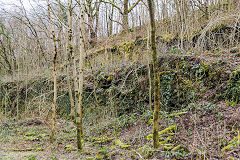
Wingfield Colliery sidings
|
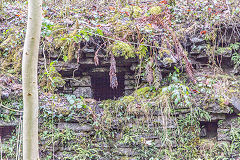
Wingfield Colliery sidings
|
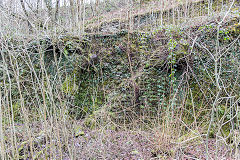
Wingfield Colliery sidings
|
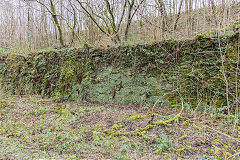
Wingfield Colliery sidings
|
Groes-faen Colliery - SO 1350 0060
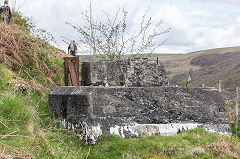
Groes-faen aerial ropeway
|
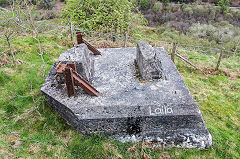
Groes-faen aerial ropeway
|
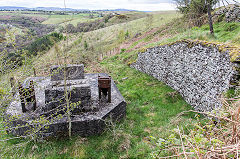
Groes-faen aerial ropeway
|
|
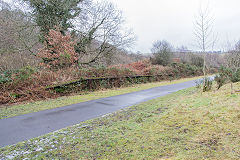
Groes-faen Colliery platform
|
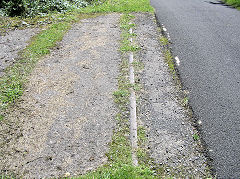
Groes-faen Colliery platform
|
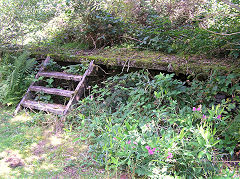
Groes-faen Colliery platform
|
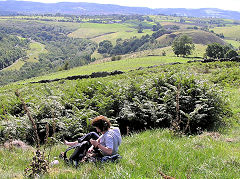
Groes-faen Colliery tips
|
Darran Colliery - SO 1305 0125
Darran Colliery was opened by the Rhymney Iron Co in 1868 and closed in 1919. 27 men died in an unexpected gas explosion in 1909, the colliery always being considered free of gas. A monument to the vistime stands beside the Darran Valley Pathway.

Darran Colliery in 1898
|

Darran Colliery in 1915
|

Darran Colliery, c1900
|
|

Darran Colliery disaster, 1909
|

Darran Colliery disaster, 1909
|
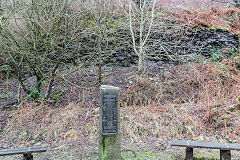
Darran Colliery disaster memorial
|
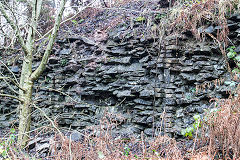
Darran Colliery screens
|
Deri Village and Station - SO 1285 0170
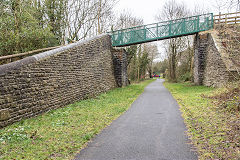
Deri footbridge
|
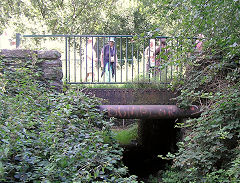
Deri station subway
|
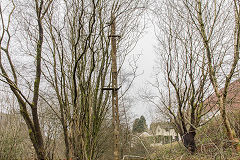
Deri Station signal post
|

Deri Station signal post
|

Deri goods yard sidings
|
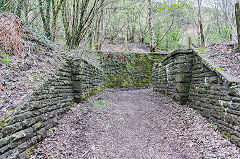
Deri goods yard sidings
|
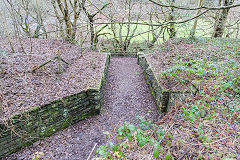
Deri goods yard sidings
|
|
In the hills around Deri

Marquis of Bute boundary stone
|
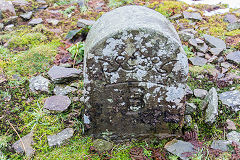
Marquis of Bute boundary stone
|

Quarries above Deri
|
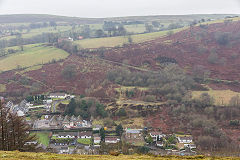
Quarries above Deri
|
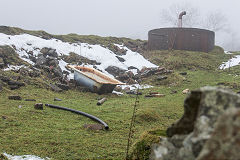
1870s quarry at Tyr-capel
|
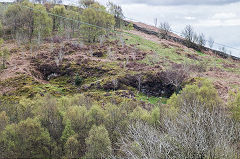
Craig-y-felin quarries
|
|
|
Deri overbridge - SO 1254 0247
The wooden overbridge spanning the BMR main line and the Ogilvie Colliery branch is now a listed structure and was restored in 2010.

Deri overbridge
|
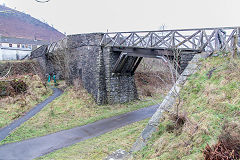
Deri overbridge
|
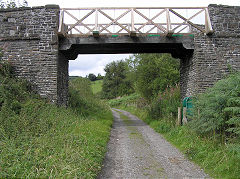
Deri overbridge
|
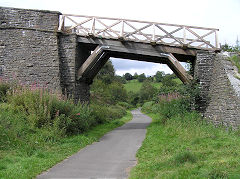
Deri overbridge
|
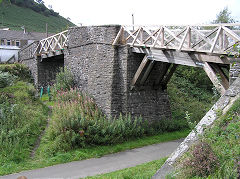
Deri overbridge
|
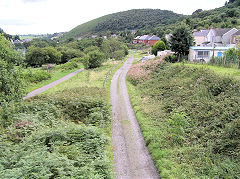
Deri BMR trackbed
|
|
|
Ogilvie Colliery - SO 1202 0298
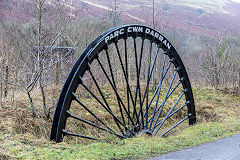
Ogilvie Colliery winding wheel
|
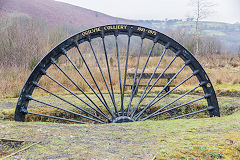
Ogilvie Colliery winding wheel
|
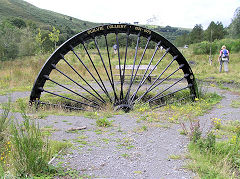
Ogilvie Colliery winding wheel
|
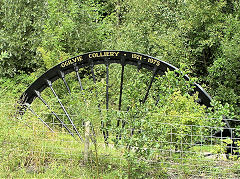
Ogilvie Colliery winding wheel
|
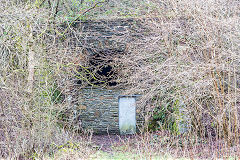
BMR underbridge
|
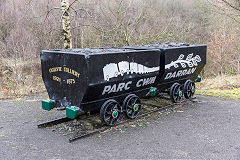
Ogilvie Colliery drams
|
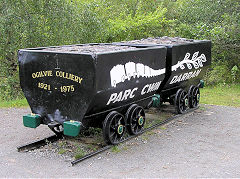
Ogilvie Colliery drams
|
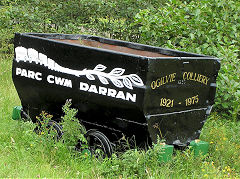
Ogilvie Colliery drams
|
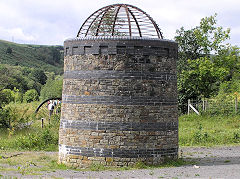
Ogilvie Colliery airshaft
|
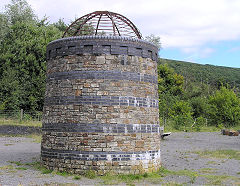
Ogilvie Colliery airshaft
|
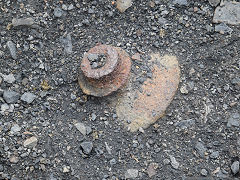
Guide wheel on the tips
|
|
Fochriw and Pentwyn
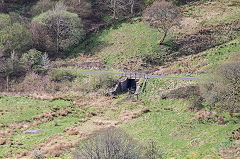
Pen-y-banc bridge BMR
|
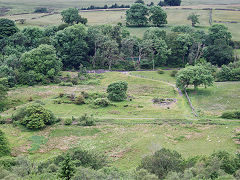
Capel Siloh BMR, Pen-y-banc
|

The BMR passing through Fochriw
|
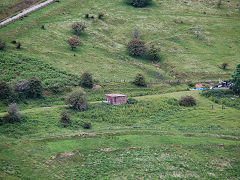
The BMR passing through Fochriw
|
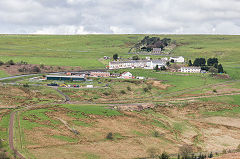
Pentwyn Village
|
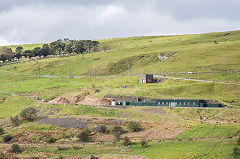
Ffynnon Duon Colliery
|
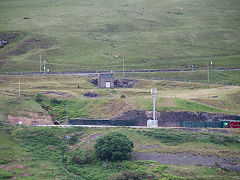
Ffynnon Duon Colliery
|
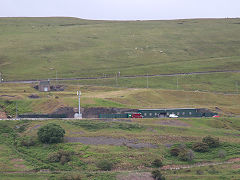
Ffynnon Duon Colliery
|
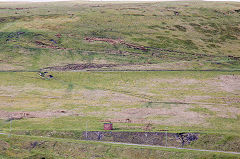
Fochriw Colliery site
|
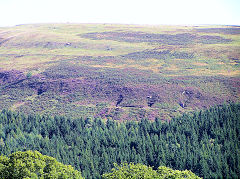
Levels opposite Pentwyn
|
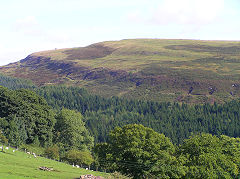
Levels opposite Pentwyn
|
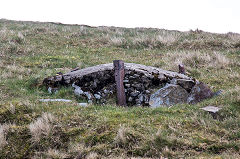
Base of a pylon
|
Between Fochriw and Rhaslas Pond
A maze of one-time railways, mines and watercourses. One more modern claim to fame is that an early David Tennant episode of Doctor Who was filmed up here. It was called Tooth and Claw, when the Doctor and Rose met Queen Victoria on a Scottish moor, (actually Fochriw!)
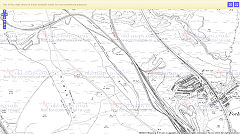
Fochriw, 1900
|
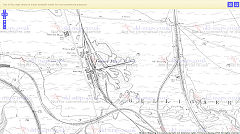
Tunnel Pits, 1900
|
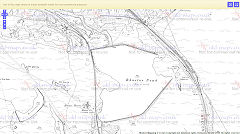
Rhaslas Reservoir, 1900
|
|

Fochriw aerial view, 1945
|
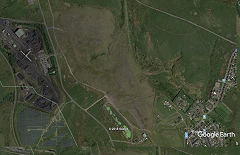
Fochriw satellite view, 2018
|

Rhaslas aerial view, 1945
|
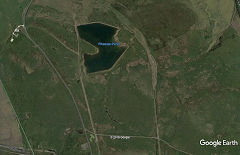
Rhaslas satellite view, 2018
|
Around Fochriw Colliery feeder pond - SO 0993 0547
Tips, shafts and workings from the late 19th century.
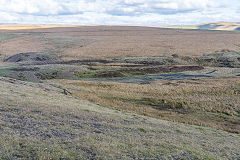
Fochriw tips and workings
|
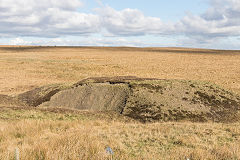
Fochriw tips and workings
|
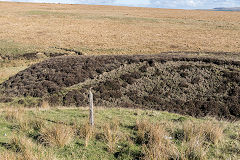
Fochriw tips and workings
|
|
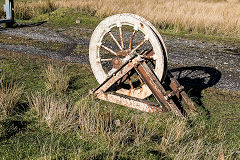
Pulley wheel at Fochriw
|
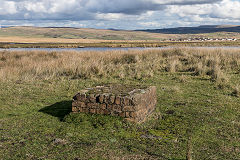
Air shaft at Fochriw feeder pond
|
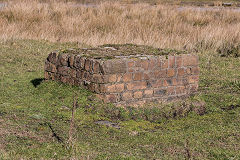
Air shaft at Fochriw feeder pond
|
|
The Brecon and Merthyr Railway - SO 0996 0638
The Brecon and Merthyr Railway bridged the Pontlottyn road here. To the South an embankment ran to Fochriw past the sidings to Fochriw Colliery on the right. A brick-built building near the site of the station may be a permanent way hut. To the North a deep cutting took the line towards Pant-y-Waun Halt but this soon disappears under the opencast tips.
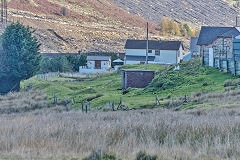
Fochriw P W hut
|
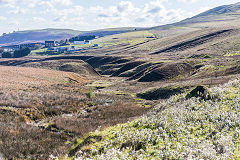
Looking towards Fochriw
|
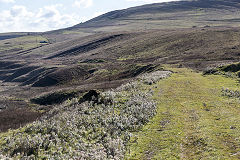
Looking towards Fochriw
|
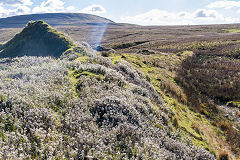
Fochriw Colliery branch junction
|
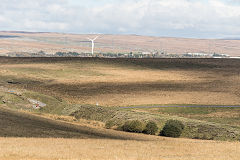
The B&MR embankment
|
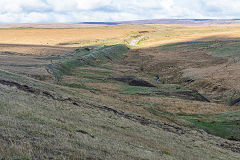
The B&MR embankment
|

The B&MR embankment
|
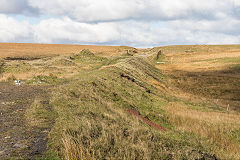
The B&MR embankment
|
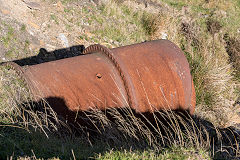
A culvert undert the B&MR
|

The B&MR embankment
|
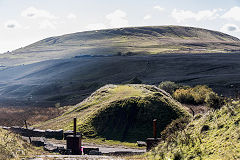
The B&MR bridge abutments
|
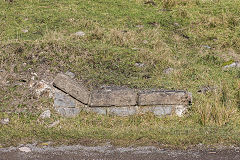
The B&MR bridge abutments
|
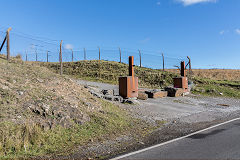
The B&MR bridge abutments
|
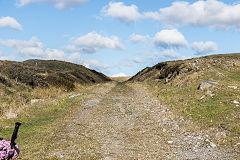
The B&MR cutting
|
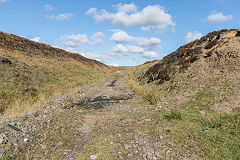
The B&MR cutting
|
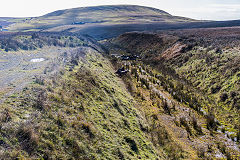
The B&MR cutting
|
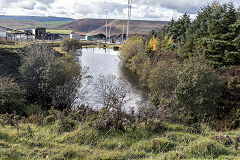
The B&MR to GWR/RR line
|
|
|
|
Around Rhaslas Pond - SO 0950 0715
Rhaslas Pond was opened c1818 as one of the largest ponds that formed the Dowlais Free Drainage System. This system of linked ponds primarily fed water to Dowlais and Ivor ironworks.
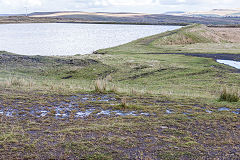
Rhaslas Pond
|
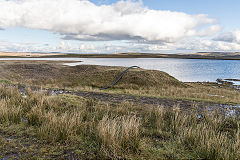
Rhaslas Pond
|

Rhaslas Pond
|
|
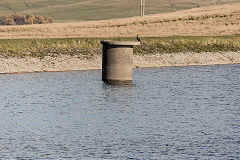
Rhaslas Pond Outtake pipe
|
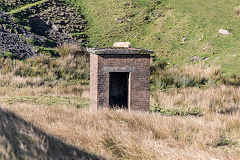
Rhaslas Pond valvehouse
|
|
|
Rhaslas Houses Quarry - SO 0907 0715
Rhaslas Houses were a pair of houses built prior to 1868 with a small quarry behind them and Rhaslas Pit in front. The quarry may have been the source of stone to line Rhaslas Pit shaft.

Rhaslas Houses Quarry
|
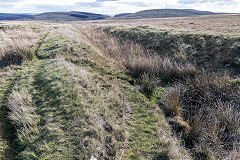
Rhaslas Houses Quarry
|
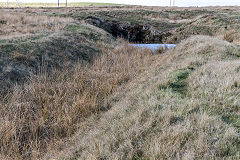
Rhaslas Houses Quarry
|
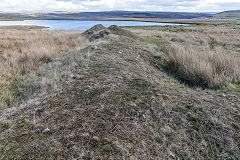
Rhaslas Houses Quarry
|
Rhaslas Pit - SO 0927 0702
Rhaslas Pit appears to be a ventilating shaft dating from before 1870 but only known as 'Rhaslas Pit' by 1898. Prior to 1898 'Rhaslas Pit' is shown as just below Lower Four Foot Pit but by then marked as an 'old shaft'.
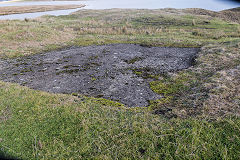
Rhaslas Pit capped shaft
|
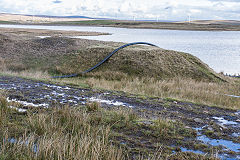
Rhaslas Pit tips
|
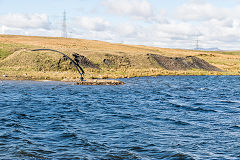
Rhaslas Pit tips
|
|
Tunnel Pit Houses - SO 0932 0632
Tunnel Pit Houses or South Tunnel Houses were built between 1870 and 1890 opposite South Tunnel Pit as a row of four cottages. They were rebuilt into one property, the 'Tunnel Tavern' in the 1970s and I believe it closed and was demolished in the late 1980s. Shepherds Pond above them was part of the Dowlais Free Drainage System of 1818. The 'tunnel' was the B&MR tunnel under the Merthyr Road in 1868 but this had gone by 1898, replaced by a bridge. Of the South Tunnel Pit itself, there's not the slightest trace.
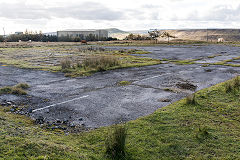
Tunnel Pit Houses
|
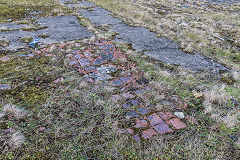
Tunnel Pit Houses
|
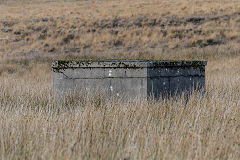
Shepherds Pond valvehouse
|
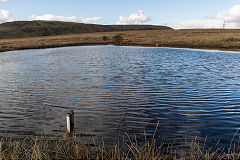
Shepherds Pond
|
Pant-y-Waun Mineral Railway
In 1875 the Pant-y-Waun Mineral Railway linked Dowlais Ironworks with Pant-y-waun Pit, Carnau Drift, Mine Pits Nos 1 and 2 and Lower Four Feet Pit. It was worked by locos from Dowlais Ironworks. Pant-y-waun Pit, Carno Drift and Mine Pits Nos 1 and 2 were closed c1886 so the railway from Dowlais to Lower Four Feet Pit closed and an extension Southwards to Tunnel Pit and Fochriw opened instead. The sinking of Tunnel Pit commenced in 1859 but was suspended until 1869, coal being raised in 1874 and it closed in 1924. That spelled the end of the Pant-y-Waun Mineral Railway and unfortunately very little remains due to the opencast and reclamation work.
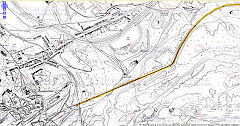
Pant-y-Waun mineral railway,1875
|
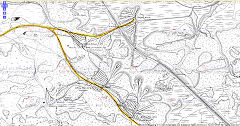
Pant-y-Waun mineral railway,1875
|
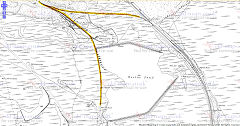
Pant-y-Waun mineral railway,1875
|
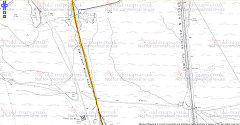
Pant-y-Waun mineral railway, 1919
|
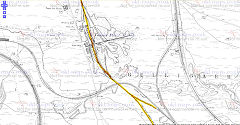
Pant-y-Waun mineral railway, 1919
|
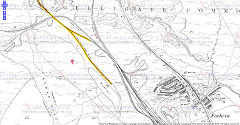
Pant-y-Waun mineral railway, 1919
|
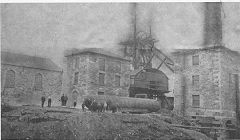
Tunnel Pit
|
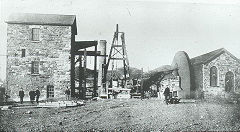
Tunnel Pit
|
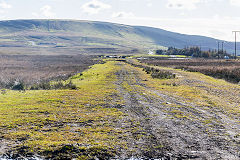
Pant-y-Waun Mineral Railway
|
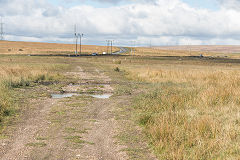
Pant-y-Waun Mineral Railway
|
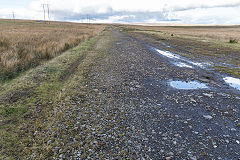
Pant-y-Waun Mineral Railway
|
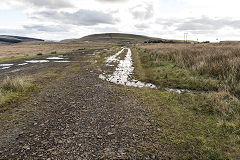
Pant-y-Waun Mineral Railway
|

Pant-y-Waun Mineral Railway
|
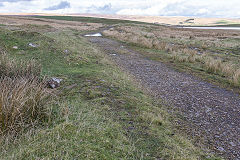
Pant-y-Waun Mineral Railway
|
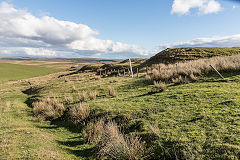
Pant-y-Waun Mineral Railway
|
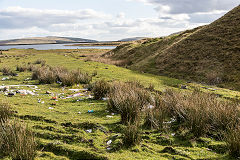
Pant-y-Waun Mineral Railway
|

Pant-y-Waun Mineral Railway
|
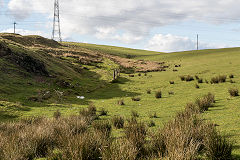
Pant-y-Waun Mineral Railway
|
|
|
Lower Four Feet Pit - SO 0910 0745
Lower Four Feet Pit probably started work c1856 with Pant-y-waun Pit and was reported flooded in 1868 when a shaft and level are shown on the OS map. At this time 'Rhaslas Pit' was just a few yards away. It was linked to Dowlais Ironworks by the Pant-y-Waun Mineral Railway. By 1898 Lower Four Feet Pit was much reduced and by 1915 is just shown as a pumping station. Nothing but tips are shown on the 1948 map except the 'old shaft' of Rhaslas Pit.
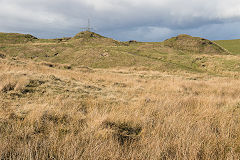
Lower Four Feet Pit
|
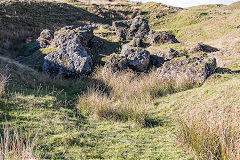
Lower Four Feet Pit
|
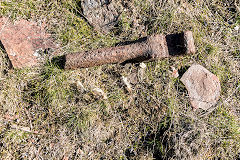
Tramway chair and cill at pit
|
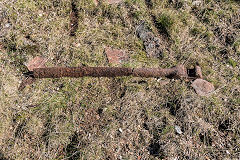
Tramway chair and cill at pit
|
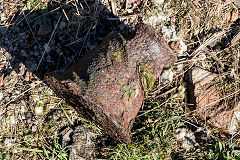
Lower Four Feet Pit cable roller
|

Lower Four Feet Pit lower pond
|
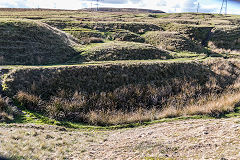
Lower Four Feet Pit tramway
|
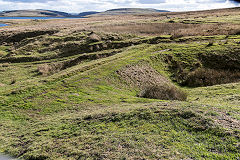
Lower Four Feet Pit tramway
|
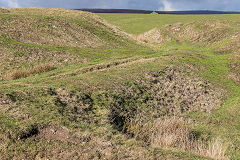
Lower Four Feet Pit tramway
|
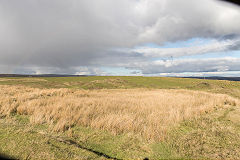
Lower Four Feet Pit upper pond
|
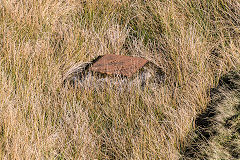
Lower Four Feet Pit shaft
|
|
Rhymney
Bryn-oer Patch
Bryn-oer Patch has been subject to opencasting which has lost almost everything of interest. A few small areas remain where, with a lot of imagination, a taste of industry can be sensed.
Bryn-oer Quarry - SO 1190 0945
An old iron ore quarry marked as 'Old' on the 1875 OS map. It seems to be just one small area untouched by the opencasting work.

An old iron ore quarry on Bryn-oer
|
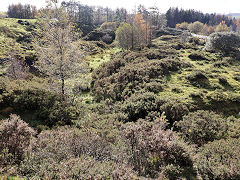
An old iron ore quarry on Bryn-oer
|
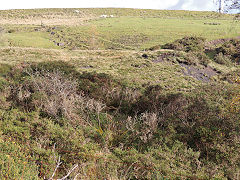
An old iron ore quarry on Bryn-oer
|
Bryn-oer Level and Suzannah's Row - SO 1130 0885
Bryn-oer Level was working by 1840 and appears to have been disused by 1875. It was connected to the Rhymney (Brinore) Tramroad to Trefil and seems to have closed when the tramroad closed. Suzannah's Row was built c1805 for iron and coal workers, probably during Richard Crawshay's ownership of the Union Ironworks. They are now very derelict and protected by stout metal fencing. Suzannah was the sister of Richard Crawshay and married John Bailey, becoming the parents of Crawshay Bailey of Nant-y-glo.
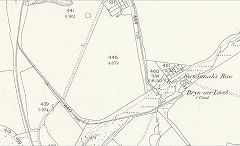
Bryn-oer Level and Suzannah's Row
|
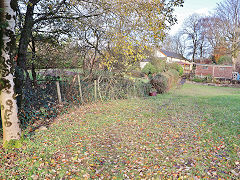
The site of Bryn-oer Level
|
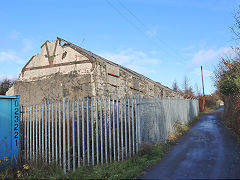
Suzannah's Row, Rhymney
|
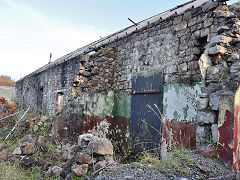
Suzannah's Row, Rhymney
|
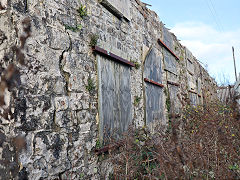
Suzannah's Row, Rhymney
|
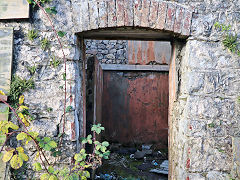
Suzannah's Row, Rhymney
|
Tai-Level-Lo - SO 1142 0866
Tai-Level-Lo, or Tai'r Lefel Glo, consisted of two rows of pre-1846 cottages with coal workings around them. A licenced mine worked 6 levels in the hills above them from 1955 to 1992. The site of the cottages is now a smallholding. Tai'r Lefel Glo translates as 'Coal Level Houses'. John Morgan adds that the Houses were actually called Colliers Row. In the 1881 census his Great Grandparents, grandmother and her brother along with his 2x great Grandmother and 2x great uncle lived in 9 Colliers Row.
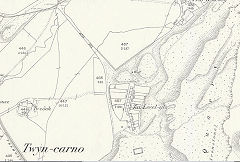
Tai-level-glo,1877
|
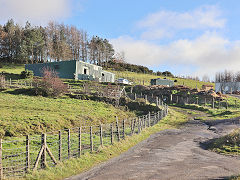
The site of Tai-Level-Lo
|
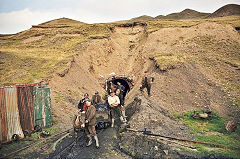
Mining at Tai-Level-Lo in 1965
|
Gwaun Fawr Pit - SO 1148 0847
Gwaun Fawr Pit, or Waun Fawr, was probably working before 1840 and passed into the Rhymney Iron Co in 1873. It was abandoned in 1879 but used for ventilation for some years. It was connected to the Iron Co's valley tramway by what appears to be a double track incline. It may well have mined both coal and ironstone.
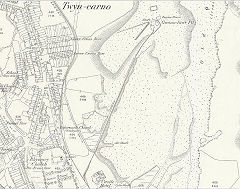
Gwaun-fawr Pit, 1877
|
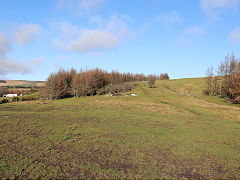
The site of Waun-Fawr Pit
|
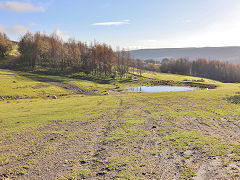
The site of Waun-Fawr Pit
|
|
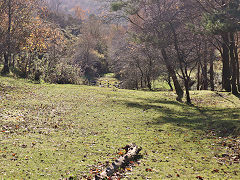
Waun-Fawr Pit incline
|

Waun-Fawr Pit incline
|

Waun-Fawr Pit incline
|
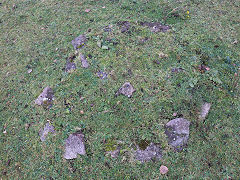
Airshaft on Waun-Fawr Pit incline
|
Bute Town - SO 1045 0915
Bute Town, originally known as New Town, was built in 1802 for the workers at the Union Ironworks. The model village was renovated in 1979. The reservoir opposite is shown on the 1840s tithe map. The LNWR / GWR railway link from the MTAR at Rhymney Bridge to Rhymney passed under the entrance road.
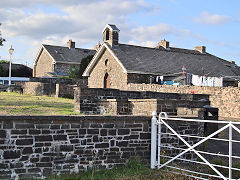
Bute Town, Rhymney
|
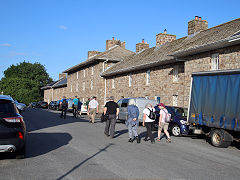
Bute Town, Rhymney
|
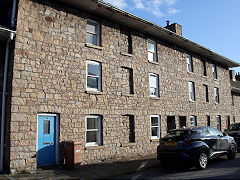
Bute Town, Rhymney
|
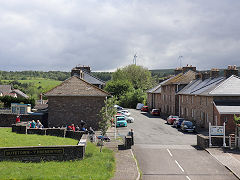
Bute Town, Rhymney
|

Bute Town reservoir, Rhymney
|
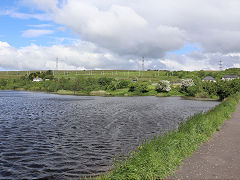
Bute Town reservoir, Rhymney
|
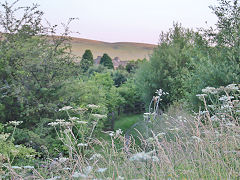
The LNWR/GWR trackbed
|
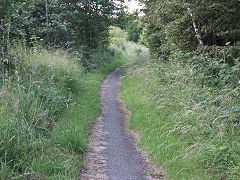
The LNWR/GWR trackbed
|
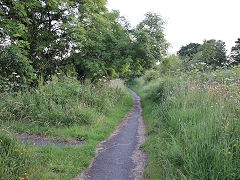
The LNWR/GWR trackbed
|
Nant Llesg Pit - SO 1050 0830
Nant Llesg Pit and Pitwellt were ironstone mines either side of Nant Llesg House, open by 1875 and disused by 1898. By 1915 a series of large water tanks and buildings were built in the grounds of Nant Llesg House but are now disused. The Rumney Ironstone Railway to the limestone quarries at Twynau Gwynion ran past the site.

Nant Llesg, 1875
|
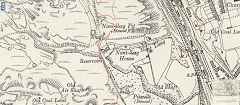
Nant Llesg, 1915
|
|
|
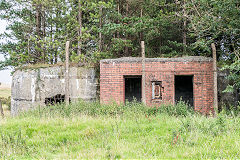
Water tank building
|
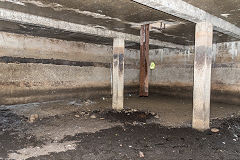
Water tank building
|
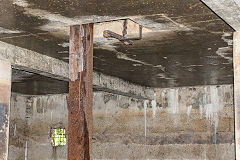
Water tank building
|
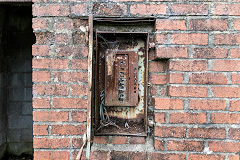
Water tank building
|
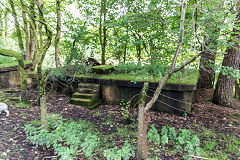
Small square tanks
|
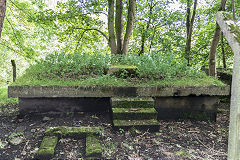
Small square tanks
|
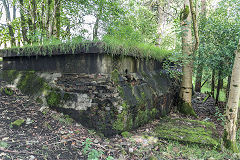
Small square tanks
|
|

Large round tank
|
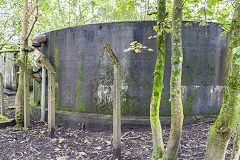
Large round tank
|
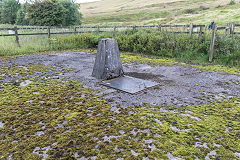
Nant Llesg ironstone shaft
|
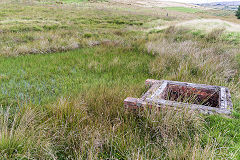
Reservoir at the ironstone shaft
|
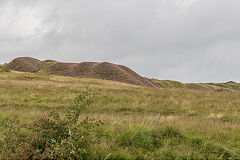
Bryn Pyllog tips
|
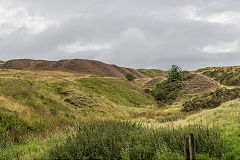
Bryn Pyllog tips
|
|
|
Rhymney Town
Old Rhymney was riddled with the Rhymney Iron Co's tramways running through it. They connected the ironworks with small levels, the brickworks, the brewery and sidings on the main railway line.
Over the years re-building has changed the scene but some routes can still be followed. The tramway from Twyn Carno, past the brickworks and brewery site is a pleasant riverside walk and the route to the tunnel under 'The Lawn' is a lane and footpath up to the site of the tunnel.
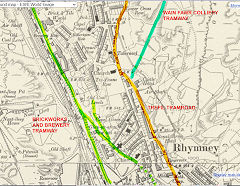
Rhymney town tramways, 1899
|

Hospital and railway line
|
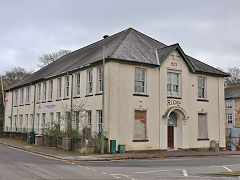
Rhymney Iron Co's offices
|

Rhymney rail at Rorkes Drift
|

Riverside tramway trackbed
|
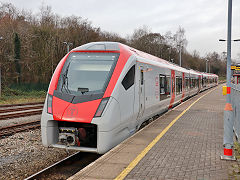
Rhymney Station and '231 010'
|
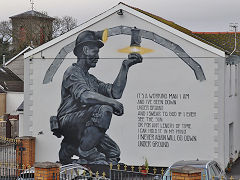
Mural on the wall of the 'Castle Hotel'
|

The site of Rhymney brickworks
|
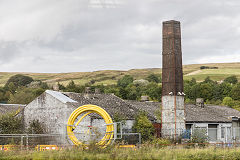
Rear of Oakridge factory, Rhymney
|
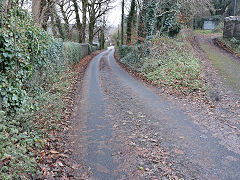
Rhymney brickworks tramway
|
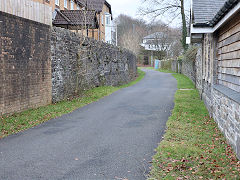
Rhymney brickworks tramway
|
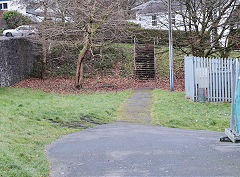
Rhymney brickworks tramway
|

brickworks coal levels tramway
|
|
|
|
Union Ironworks, Llechryd - SO 1085 0917
This is an 1802 upper blast furnace on the site of the Union Ironworks, the first ironworks in Rhymney. A Boulton and Watt 24cyl, 5 stroke (double) blowing engine was supplied in 1801.

Union Ironworks blast furnace
|
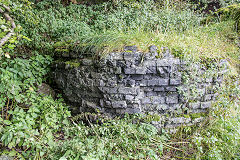
Union Ironworks blast furnace
|
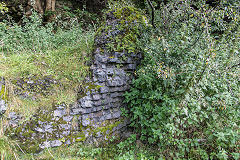
Union Ironworks blast furnace
|
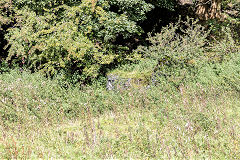
Union Ironworks blast furnace
|
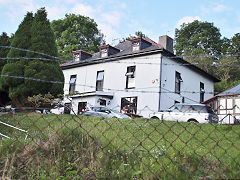
Union Ironworks managers house
|

Union Ironworks noticeboard
|
Rhymney Tramroad to Tredegar - SO 1110 0925
On the North Western side of the stream towards Bryn-brith Pit, along the hedgerow, investigations have found evidence of a tramroad. This is should be the first 2'9" tramroad to Tredegar. The small header pond, below the original Bryn Bach pond, still exists.
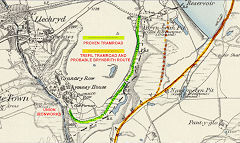
Tramroads near the Union Ironworks
|
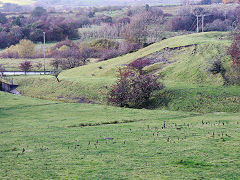
The original Tredegar Tramroad
|
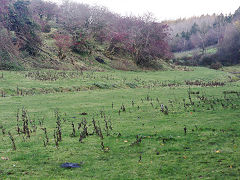
The original Tredegar Tramroad
|
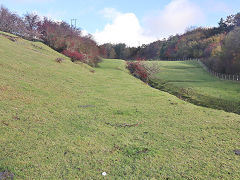
The original Tredegar Tramroad
|
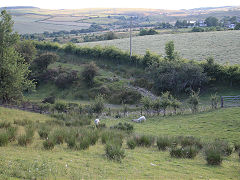
The original Tredegar Tramroad
|
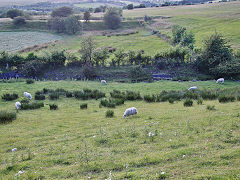
The original Tredegar Tramroad
|
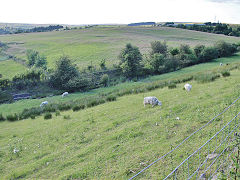
The original Tredegar Tramroad
|

The original Tredegar Tramroad
|
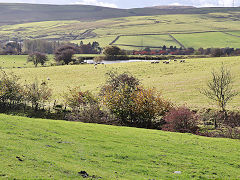
Feeder pond near Bryn-brith
|
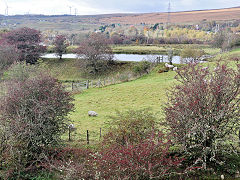
Feeder pond near Bryn-brith
|
|
|


































































